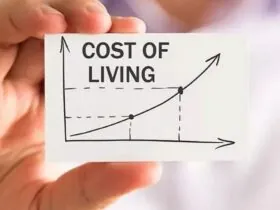The COVID-19 pandemic caused a spike in inflation, impacting the purchasing power of Americans, especially those relying on fixed incomes like Social Security benefits. Fortunately, inflation has been easing in recent months, which is a positive sign for the economy. However, for Social Security recipients, this trend may lead to a smaller-than-expected cost-of-living adjustment (COLA) for 2025. Here’s what you need to know about how this could affect Social Security benefits.
Understanding the COLA and How It Works
This Article Includes [hide]
The Social Security cost-of-living adjustment (COLA) is designed to ensure that Social Security recipients maintain their purchasing power as inflation fluctuates. Each year, the Social Security Administration (SSA) adjusts benefits based on the rise in prices for everyday goods and services, as measured by the Consumer Price Index for Urban Wage Earners and Clerical Workers (CPI-W). This index tracks changes in prices for basic necessities such as food, energy, and transportation.
Since 2021, Social Security beneficiaries have experienced significant increases due to rising inflation. The SSA implemented COLA increases of 1.3% in 2021, 5.9% in 2022, 8.7% in 2023, and 3.2% in 2024. These adjustments have helped recipients keep pace with the rising cost of living, but with inflation now cooling, the 2025 COLA is expected to be smaller.
2025 COLA Predictions: What to Expect
The SSA calculates the COLA by analyzing CPI-W data from the third quarter of each year. The official announcement of the 2025 COLA will be made on October 10, 2024. However, predictions from several organizations have already surfaced, giving recipients a glimpse of what to expect.
One of the key players in forecasting the COLA is the nonprofit Senior Citizens League. Throughout the year, this organization has been lowering its COLA estimates as inflation has cooled. Initially, it predicted a 3.2% increase for 2025, but its latest forecast suggests a more modest 2.5% increase.
While this smaller adjustment may seem disappointing, experts believe that a 2.5% increase would still be enough to help beneficiaries keep up with inflation. Since 2021, the cumulative rise in prices has been 24.6%, while Social Security benefits have increased by 23.4% in the same period. This shows that the COLA adjustments have largely kept up with inflation over the last few years.
What a 2.5% Increase Would Mean for Beneficiaries
If the Senior Citizens League’s forecast of a 2.5% COLA increase is confirmed, it would mark the smallest adjustment since 2021. For the average Social Security recipient, this would translate to an additional $48 per month, raising the average benefit to $1,966.
Although this increase is smaller than in recent years, it would still provide some relief to beneficiaries, helping them cover rising expenses in areas such as healthcare, groceries, and utilities. While the increase may not seem significant, every dollar counts for those on fixed incomes.
When Will You Know Your 2025 Benefits?
The SSA will officially announce the 2025 COLA on October 10, 2024. However, beneficiaries will receive individualized notifications of their updated benefit amounts via mail in December. Those eager to know their new benefit amounts earlier can access this information online starting in mid-November.
In the meantime, Social Security recipients can expect to see a modest boost to their monthly checks in 2025, which will help them stay afloat as inflation continues to level out.
Conclusion
The easing of inflation is a welcome relief for the broader economy, but it also means smaller increases in Social Security benefits for 2025. With the cost-of-living adjustment projected to be 2.5%, recipients should expect a modest rise in their payments starting next year. While not as large as previous increases, this adjustment will still provide some financial support to help beneficiaries keep up with essential expenses. Stay tuned for the official COLA announcement on October 10, 2024, for final confirmation on the 2025 increase.







Leave a Reply